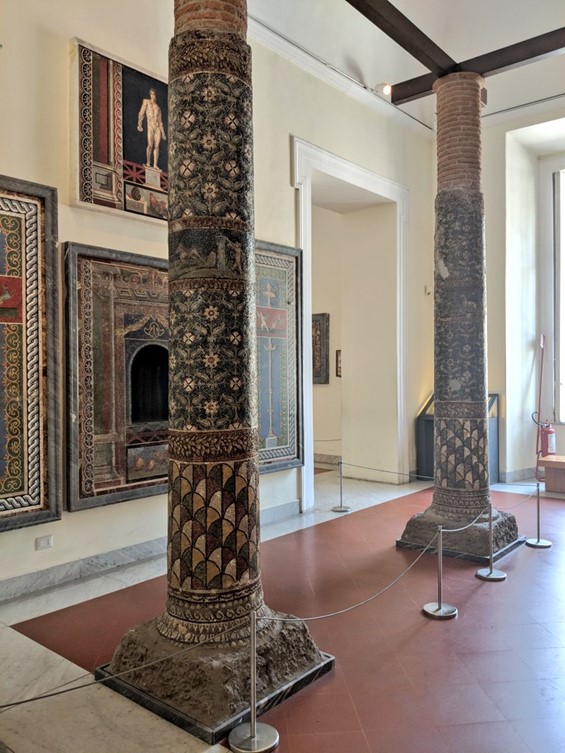
“If you have a garden in your library, we will want for nothing” wrote Marcus Tullius Cicero to his illustrious new friend Marcus Terentius Varro… and he is so right! Gardening can be so gratifying and the Romans understood it and thus “In the middle of Roman buildings…a roofless square, often with Greek sculptures and temples, was where the Hortus, the garden, was planted and enjoyed. Common Romans might only have had a small courtyard or paved square with pots. Many grew basic foods as a thin bulwark against starvation. The rich enjoyed much larger, more fertile and refined gardens, often closer to parks than yards…Cicero’s correspondent, Varro, was not only well-off but also a scholar of gardening and farming. In light of this, it’s likely that Varro did offer Cicero a well-stocked library, and in it a luxurious garden.” Villa of the Mosaic Columns is about one such lovely Garden, very specially decorated… https://www.commonsenseethics.com/blog/5-things-that-you-need-to-be-happy-according-to-cicero
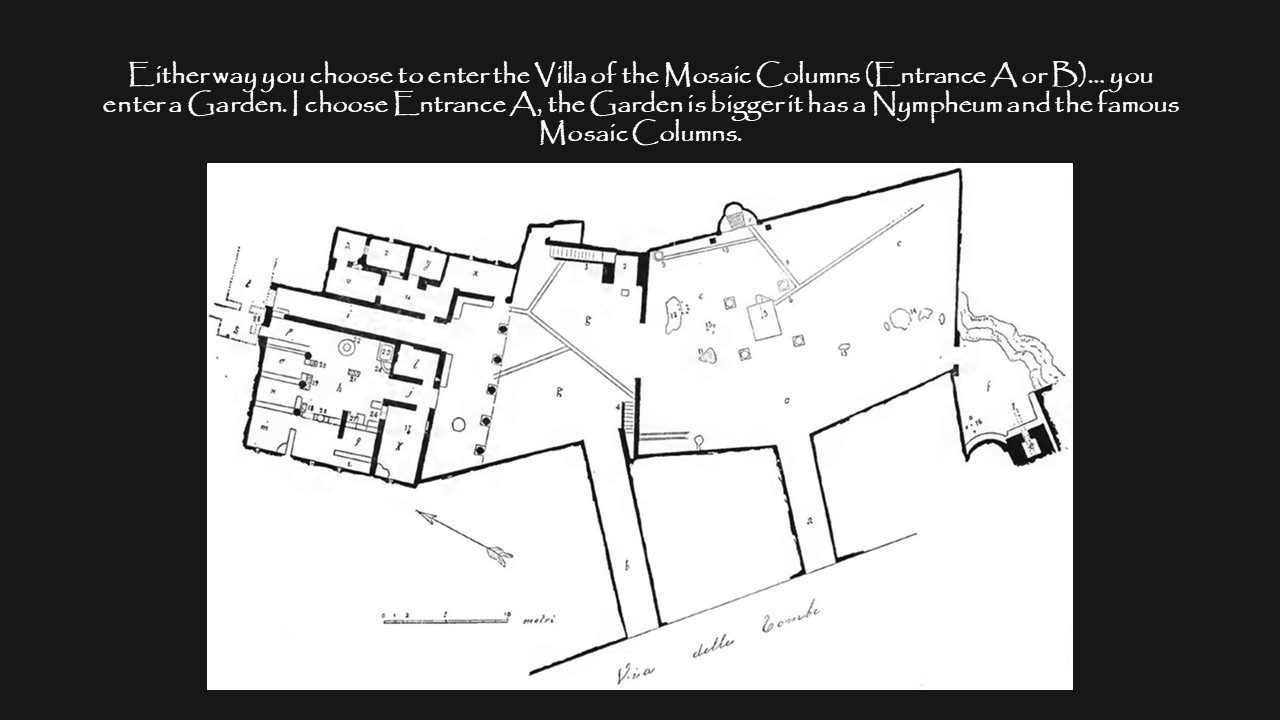
The Villa of the Mosaic Columns’ Pompeiian address is on the northern side of Via delle Tombe, behind the bars and shops facing the busy street leading to Herculaneum. Either way, you choose to enter this interesting Villa… you enter a Garden. I like to choose Entrance A (see POST Villa Plan) because Garden C is bigger, it has a mosaic-decorated Nymphaeum and a pergola supported on four magnificent Mosaic Columns. It is thanks to these unique mosaic columns that the Villa, justifiably, took its name. https://sites.google.com/site/ad79eruption/pompeii/villas-outside-the-walls/villa-of-the-figured-capitals
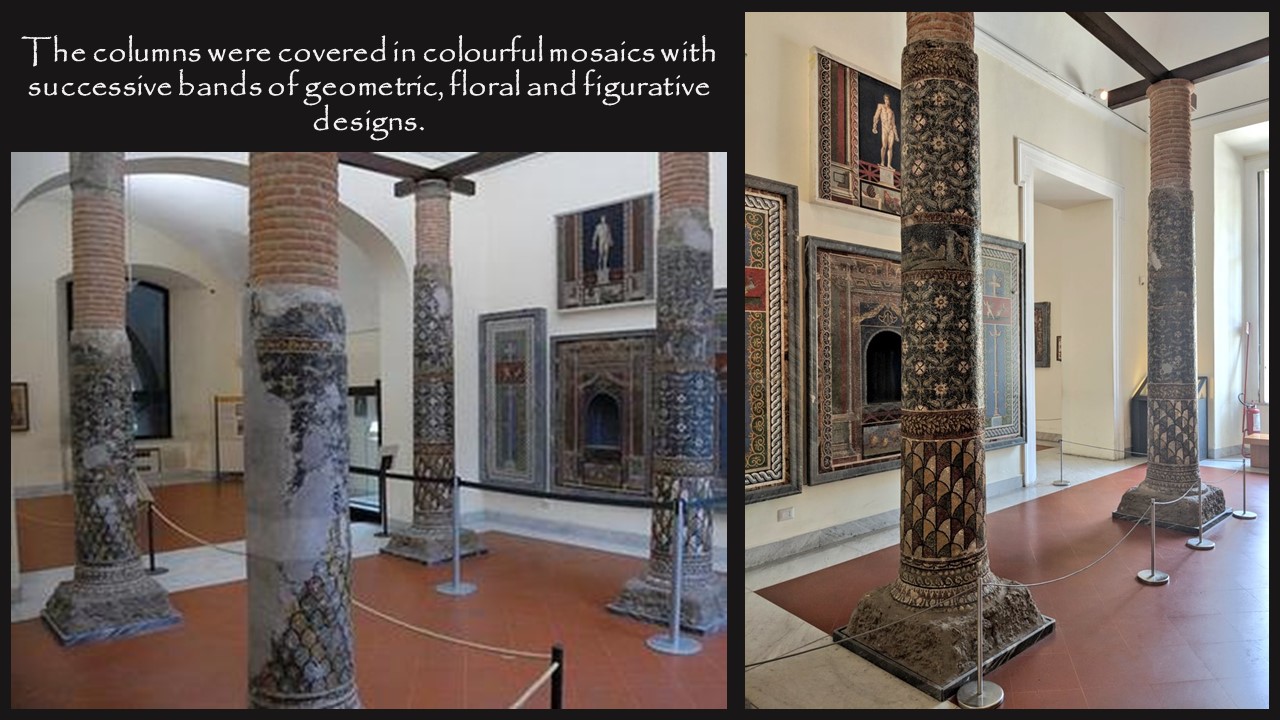
The Villa’s Columns are magnificent! They are covered in colourful mosaic decorations with successive bands of geometric, floral and/or figurative designs. The Villa is unfortunately in a poor state of preservation and thus soon after their discovery, the columns were removed and taken to the National Archaeological Museum in Naples where can today be seen.
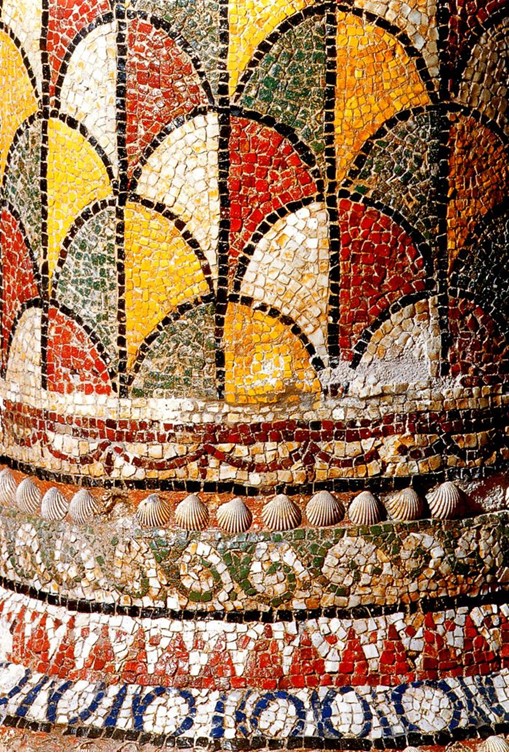
The second Garden G is accessed by a wide-open area on the north side of Garden C as well as a corridor leading to Via delle Tombe. Very little survives of its original decoration apart from a Lalarium on its south-west corner. The colonnade to the north marks the entrance to the main living quarters which are unfortunately in an almost ruinous condition. The Villa was probably the most ostentatious in the area. “The decoration in fine painting and mosaics, the grandeur of the architecture and the size of the servant quarters put the Villa delle Colonne a Mosaico on a par with or greater than its immediate neighbours, above which it literally towered. Finally, the row of shops that lie beneath the Villa, which was certainly built during a combined sequence of construction, implies that one source of the villa owner’s wealth was the trades practised by those who worked and lived in this complex. Therefore, the shops supported the Villa economically as well as physically, extending the metaphor into a clearly visible statement of the social hierarchy of the city – a statement that complemented the public display that the Villa itself represented.” http://online.sfsu.edu/pompeii/research2006.html
An interesting discovery lays at the Villa’s south/east side where, within a gated enclosure, a Tomb and a unique Blue and White Glass Vase were discovered. According to Jashemski… “Since this was the only tomb that had a door leading from the tomb chamber into the garden, and since the only entrance to the garden was from the villa of the Mosaic Columns, it was obvious that the tomb and its garden belonged to this villa.” Jashemski, W. F., 1993. The Gardens of Pompeii, Volume II: Appendices. New York: Caratzas, (p.256).
Today, the Blue Glass Vase, found in the Villa of the Mosaic Columns’ Tomb, is one of the most precious treasures of the Naples Archaeological Museum. We will discuss this amazing Vase in Villa of the Mosaic Columns, Part 2.
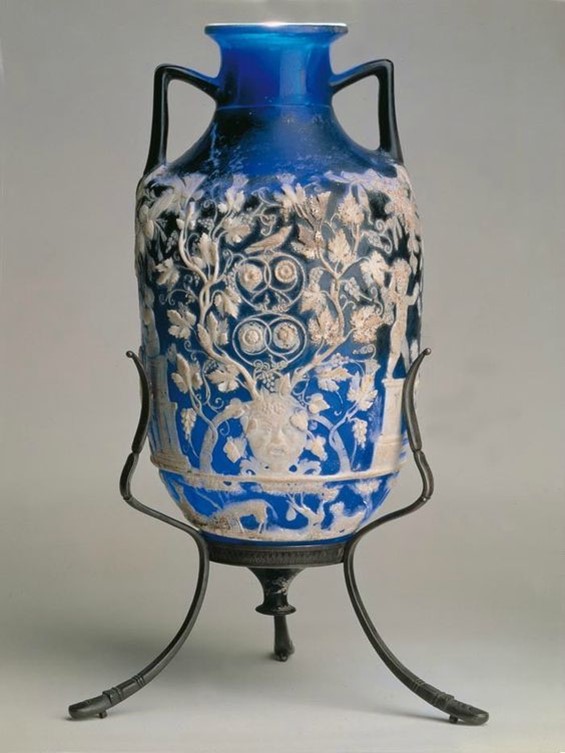
I would like to finish this POST once again with Cicero, who, as he was growing older, he enjoyed more and more the calm and serenity of his gardens, either in his Tusculum Villa where he withdrew to his library and gardens to think and write, or his family Villa in Arpinum, where during his later years, he collected his scrolls and codices, away from Rome, for better protection. “By means of our hands, we struggle to create a second world within the world of nature,” Cicero wrote, thinking as a Stoic philosopher, for whom “the garden was a microcosm of the larger order of the cosmos.” https://www.commonsenseethics.com/blog/5-things-that-you-need-to-be-happy-according-to-cicero
For a PowerPoint on the Villa of the Mosaic Columns, please… click HERE!